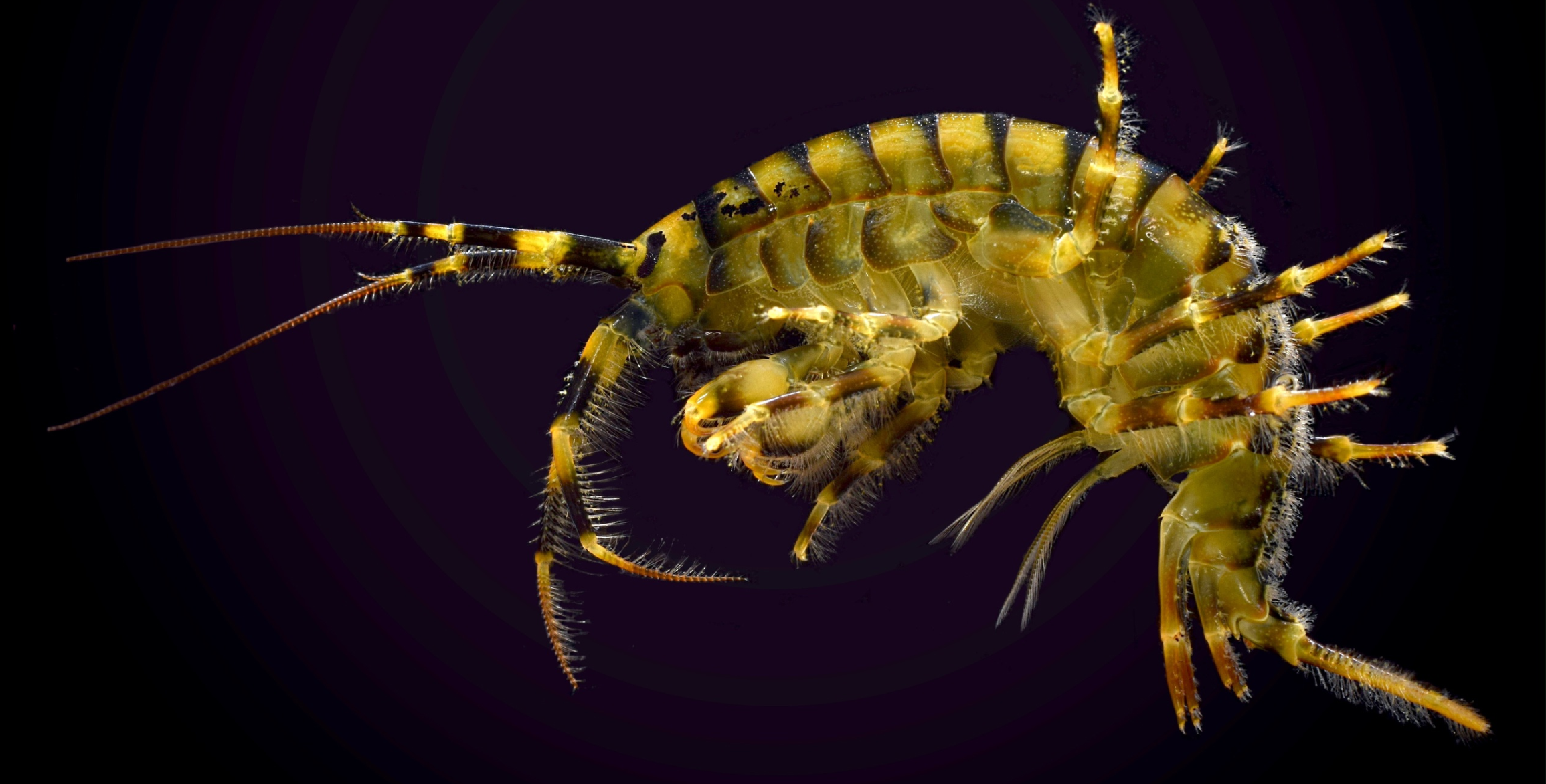The results of a comparative study of amphipod crustaceans, obtained at the Research Institute of Biology, were included in the weekly digest of the most interesting events in Russian science, published by the Ministry of Education and Science of Russia. Director of the Research Institute of Biology, Maxim Timofeev, told us about the work:
In Lake Baikal, there is a very common species of amphipod crustacean called Eulimnogammarus verrucosus. This species has been known for a very long time; it was one of the very first to be described back in 1858. And this is not surprising, since these are precisely the crustaceans that anyone on the shores of the lake will discover first. It is enough to simply lift any large stone at the water’s edge, and dozens of crustaceans, resembling green shrimp, will instantly scatter in different directions. So, a couple of years ago, while studying the genetic diversity of this species, which is widespread along the entire coast of the lake, scientists at our research institute suddenly discovered that, in fact, there are not one, but three different species of Eulimnogammarus verrucosus in Baikal. Moreover, these three species are indistinguishable from each other externally – in scientific terms, such “hidden” species are called cryptic species.
It turned out that the cryptic species of Eulimnogammarus verrucosus, although they are closely related, are clearly distinguishable at the genetic level. It was established that they inhabit different regions of Baikal: the most aggressive species lives in the southeast, and the other two in the west and north. These ranges of distribution have quite strictly defined boundaries, separating the habitats of each species from each other. Thus, in the area of Southern Baikal, this boundary runs exactly along the source of the Angara River, which is an unsurpassable barrier for crustaceans due to the intense flow of cold water flowing out of the lake at high speed. The source of Angara effectively separates the coastal communities of Eulimnogammarus verrucosus belonging to competing species.
Scientists know that the source of the Angara River is a relatively young formation: it appeared quite recently (by geological standards), about 100 000 years ago. Therefore, the source itself and its banks are a very interesting model site for studying the speed and direction of the evolution of Baikal endemics. By knowing exactly when the separation of species inhabiting different shores occurred, we can assess the rate of evolutionary changes in such isolated populations.
At our research institute, a group led by Polina Drozdova is working on these issues. Having discovered the facts of cryptic diversity in the Eulimnogammarus verrucosus, Polina’s group decided to check how unique this situation is and whether it applies only to one group of crustacean species or is typical for all coastal endemics. Next in line for examination was the species Eulimnogammarus vittatus, also common in the coastal zone, which has shown a very similar situation: completely different, although externally indistinguishable, cryptic species live in isolated areas. It would seem that everything is clear with the Baikal crustaceans: once you separate them into different territories, they begin to form separate communities, evolving into separate species, and begin to compete with their once close relatives.
The third species in the study, inhabiting different shores of the source of the Angara, was Eulimnogammarus cyaneus. This is just as typical an inhabitant of the coastal littoral zone as the previous species. It can be found all along the lake’s coast, and the appearance of the crustaceans can vary greatly in color: from dark blue to light blue and even orange. Such rich morphological (external) diversity was hinting the researchers that the Eulimnogammarus cyaneus likely had a similar situation with separation into different species. Everything turned out to be completely different.
It turned out that the Baikal Eulimnogammarus cyaneus decided not to fragment into new species but continued to live as one “big and harmonious family”. Even though the coastal communities of this species were isolated from each other by the source of the Angara River a hundred thousand years ago, the species remained unchanged on both banks. It was then discovered that not only at the source, but also in the northern and southern parts of Baikal, there are still representatives of the same species. Furthermore, when placed together, Eulimnogammarus cyaneus from different remote locations do not show any aggression towards their relatives and readily mate with females of any color and geographic origin. Moreover, we found that it is the only Baikal crustacean species that can thrive in the laboratory and actively grows and reproduces in aquariums year-round.
In general, the Eulimnogammarus cyaneus turned out to be quite cheerful and positive pacifists, enjoying life. This is quite a radical difference from the Eulimnogammarus verrucosus and Eulimnogammarus vittatus living next to them.
Well, in conclusion, on the one hand, we would like to wish everyone: to approach life like a Eulimnogammarus cyaneus! But on the other hand, more seriously: it is worth noting that this fascinating story shows us very well the different paths of evolutionary strategies used by living organisms for the survival of their own species. Some develop skills for rapid specialization and evolution, aggressively fighting with close and distant relatives-competitors. Others, on the contrary, follow the path of broad tolerance, flexibility and adaptability, and survive in this way. This is what makes our Baikal unique: we can observe completely different strategies right in one lake, and sometimes literally on one square meter of the studied coastline. And this, of course, is very interesting!
More on the study at the RSF website
Photos of Polina Drozdova and Kseniia Vereschagina
















